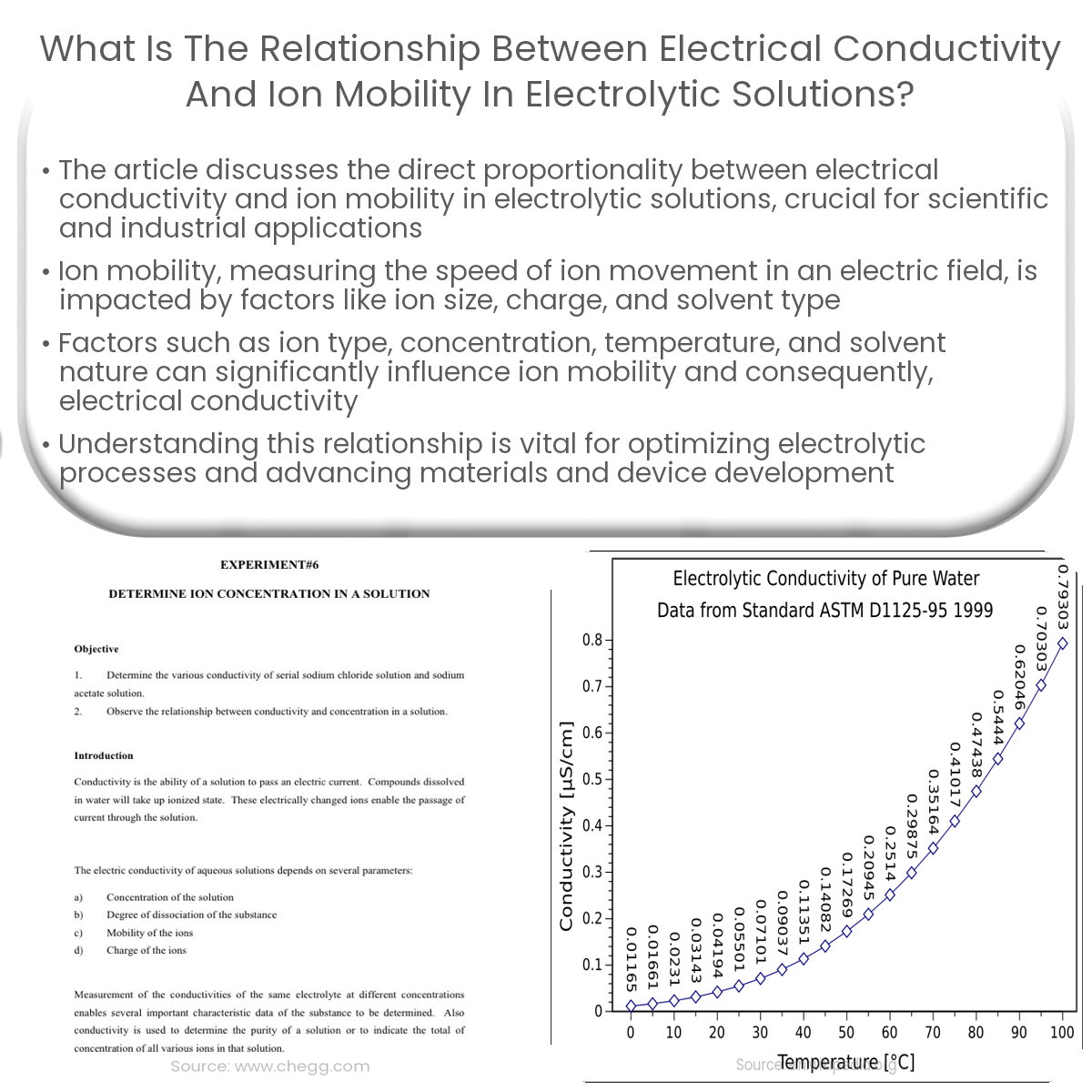Electrical conductivity in electrolytic solutions is directly proportional to ion mobility, which is influenced by ion type, concentration, temperature, and solvent nature.
Electrical Conductivity and Ion Mobility in Electrolytic Solutions
Electrical conductivity is a measure of a material’s ability to conduct electric current. In the context of electrolytic solutions, this property is dependent on the mobility of charged particles or ions within the solution. Understanding the relationship between electrical conductivity and ion mobility is crucial for various scientific and industrial applications.
Ion Mobility and its Impact on Conductivity
Ion mobility is the measure of the speed at which ions move through a solution under the influence of an electric field. It is influenced by factors such as ion size, charge, and the nature of the solvent. The higher the ion mobility, the more efficient the ions are at conducting electric current, resulting in greater electrical conductivity.
Ion mobility is directly proportional to the electrical conductivity in electrolytic solutions. According to the Kohlrausch law of independent migration of ions, the conductivity of an electrolyte can be expressed as the sum of the product of the mobility and charge of the cations and anions present in the solution.
Factors Affecting Ion Mobility and Electrical Conductivity
- Type of ions: The size, charge, and mass of ions can significantly affect their mobility. Generally, smaller and more highly charged ions exhibit greater mobility, resulting in increased electrical conductivity.
- Concentration: As the concentration of an electrolyte increases, the conductivity of the solution tends to increase due to the presence of more ions available to carry electric current. However, at high concentrations, ion pairing and interionic forces may lead to decreased ion mobility, resulting in a decrease in conductivity.
- Temperature: Temperature influences both ion mobility and the viscosity of the solvent. As the temperature increases, the viscosity of the solvent decreases, leading to increased ion mobility and consequently, higher electrical conductivity.
- Solvent nature: The nature of the solvent plays a crucial role in determining the ion mobility and conductivity of a solution. A solvent with high dielectric constant and low viscosity can better dissociate electrolytes into ions and facilitate their movement, leading to higher electrical conductivity.
In conclusion, the relationship between electrical conductivity and ion mobility in electrolytic solutions is directly proportional. Ion mobility, in turn, is influenced by various factors such as ion type, concentration, temperature, and solvent nature. Understanding this relationship is essential for the optimization of electrolytic processes and the development of advanced materials and devices.


